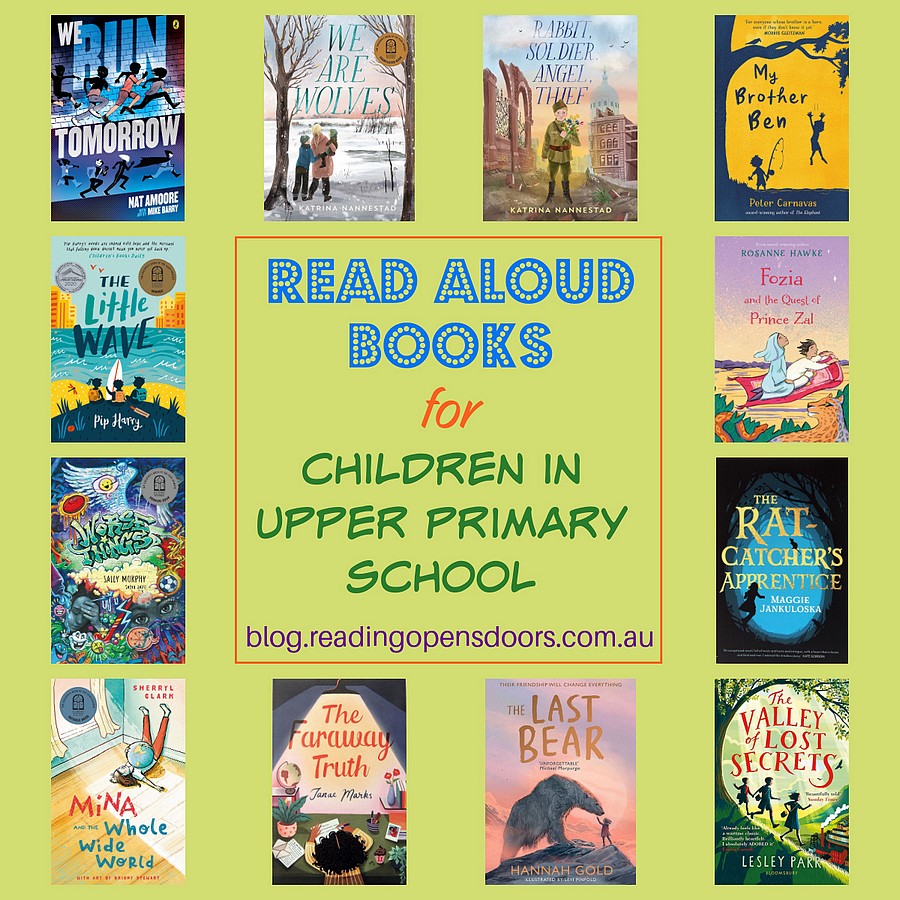
The following books are ones I have read aloud to my children and some of our favourites from the past two years. This collection is by no means exhaustive. As always, please read the books yourself to assess suitability for the children you intend to share the book with. The personal experiences and histories of children reading these books needs to be taken into consideration.
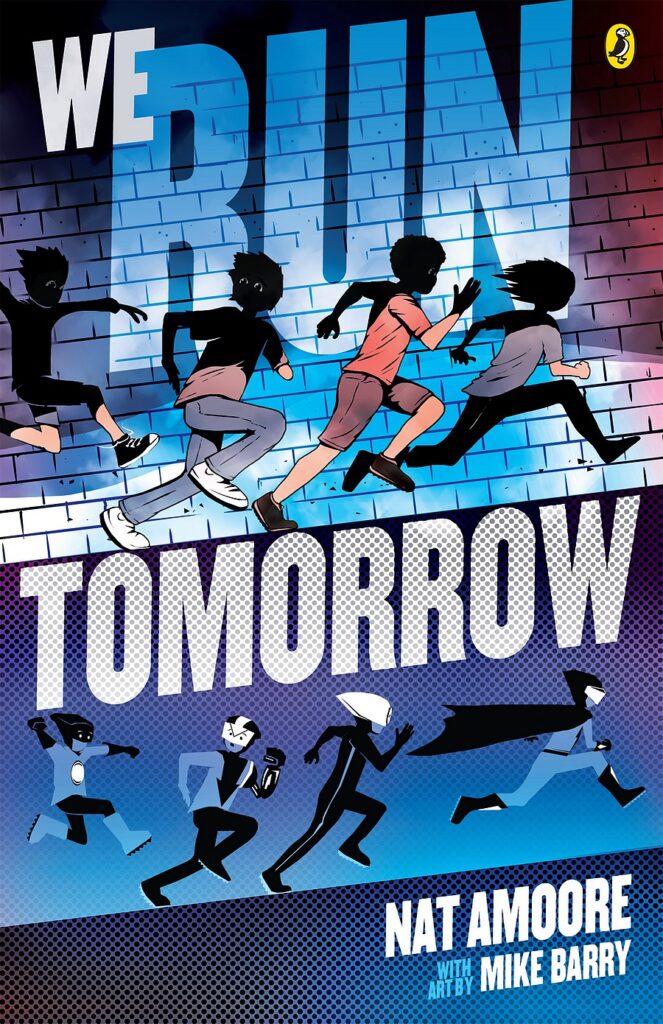
We Run Tomorrow by Nat Amoore with art by Mike Barry and published by Puffin Books, an imprint of Penguin Random House Australia is brimming with adventure and suspense as well as a (mostly) likeable cast of diverse characters. These are the types of characters you can’t help but cheer on; celebrate their wins with a fist pump and feel heart ache for their losses. This fast paced book tells the story of four fiercely loyal friends who are determined to stay together despite what life throws at them.
Jed, Maki, Tommy and Sticks are eleven years old, they are the very best of friends who live on Lockett Street, and together they are the formidable Lockett Squad, locked together. Life on Lockett Street is not always easy, Jed’s over protective parents are on a mission to convince him he is capable of anything. He has already proven this to himself and never allows his prosthetic arm to hold him back. Jed’s parents have committed him to a suite of after school activities and want to send him to Jamison Grammar school, a move Jed does not support. Maki has travelled the world as his father has a job where they are required to move every two years. Maki has finally found his tribe and does not want to move again. Tommy lives with his devoted and charismatic grandmother, Bim, who has an infectious smile always at the ready, however life with an aging grandmother means life as Tommy knows it takes a dramatic and tragic turn. Sticks lives in fear of being home alone with Bryce (the older brother) who is in trouble with the law and a vicious and violent thug. Sticks’ parents are consumed with court appearances and dealing with Bryce.
Jed, Maki, Tommy and Sticks are completely enamoured with a comic, The Screen Savers and revel spending their time together at Lockett HQ acting out scenes from their favourite comic to upload to their popular YouTube channel. Each of them take on the character of one of their heroes – Jed is HiSpeed (superpower: can download any skill at lightning speed), Maki is SkyDrop (superpower: he can teleport at warp speed), Tommy is Wiki (he has the superpower of intelligence) and Sticks is Filter (superpower: a shapeshifter, capable of taking on any form at any time).
This story is told through the eyes and heart of Sticks. When one of the squad faces the inevitable reality that they will be leaving Lockett Street, the Lockett Squad unite and hatch a plan to see this does not eventuate. With reckless abandon, a big dose of courage, some precision planning and a feeling of invincibility they plan to take their future into their own hands.
A detailed review for We Run Tomorrow can be found on the Reading Opens Doors blog here
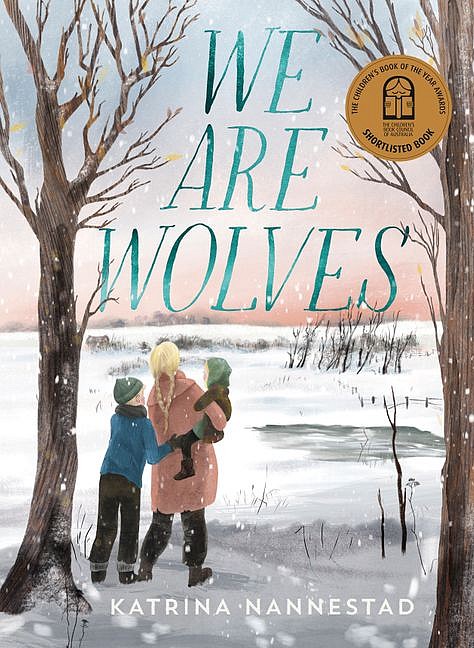
We Are Wolves by Katrina Nannestad begins when the German Wolf family suddenly learn that their father is to fight for Germany. Eleven year old Leisl, who is the narrator of this story and her younger siblings, her brother Otto (7 years old) and baby sister Mia (2 years old) together with their Mother, Oma and Opa watch as their father/husband/son limps away (he sustained an injury in his childhood) from their village to fight in the war. The Wolf family debate whether they should leave their home. Soon the decision is made for them as the Russians arrive and the five of them are forced to flee in blizzard conditions with blankets, the clothes they are wearing and some select possessions that can be carried in their horse driven cart. Together, with many other Germans, their treacherous journey sees them discover the loss and senseless devastation that the Russians have inflicted. Leisl, Otto and Mia end up being separated from their Oma and Opa due to heart breaking circumstances and later from their mother through dramatic and a horrifying course of events.
The children do what they must to survive, living in abandoned farmhouses, stealing possessions and eating whatever they can source to stave off hunger. Eventually the children seek refuge in a forest, foraging, scavenging and living wild. Everything they know and believe is challenged as they struggle to survive – they beg, steal and do things that go against human nature. Leisl is driven to protect her siblings and keep them safe, just as she promised her mother she would do.
This story is a gateway to many discussions (some very solemn and others uplifting) about the moral dilemmas and issues in this book – the complexities and horrors of war, how German youth were targeted for propaganda messages, the plight of refugees, the human face of war, children as victims of war, that there are no winners in war, befriending the enemy and the power of kindness, empathy, forgiveness and love to name a few.
Even though the children’s story is tragic and there are heavy themes in this book, this story highlights the qualities that are universal in overcoming adversity. The children display such tenacity, resilience, courage, hope, resourcefulness and above all love. They find and create joy, often when all hope seems lost, they do this through simple pleasures that present themselves in unexpected ways. This is a powerful story about our shared humanity, and highlights the power of hope, courage and love.
A detailed review for We Are Wolves can be found on the Reading Opens Doors blog here
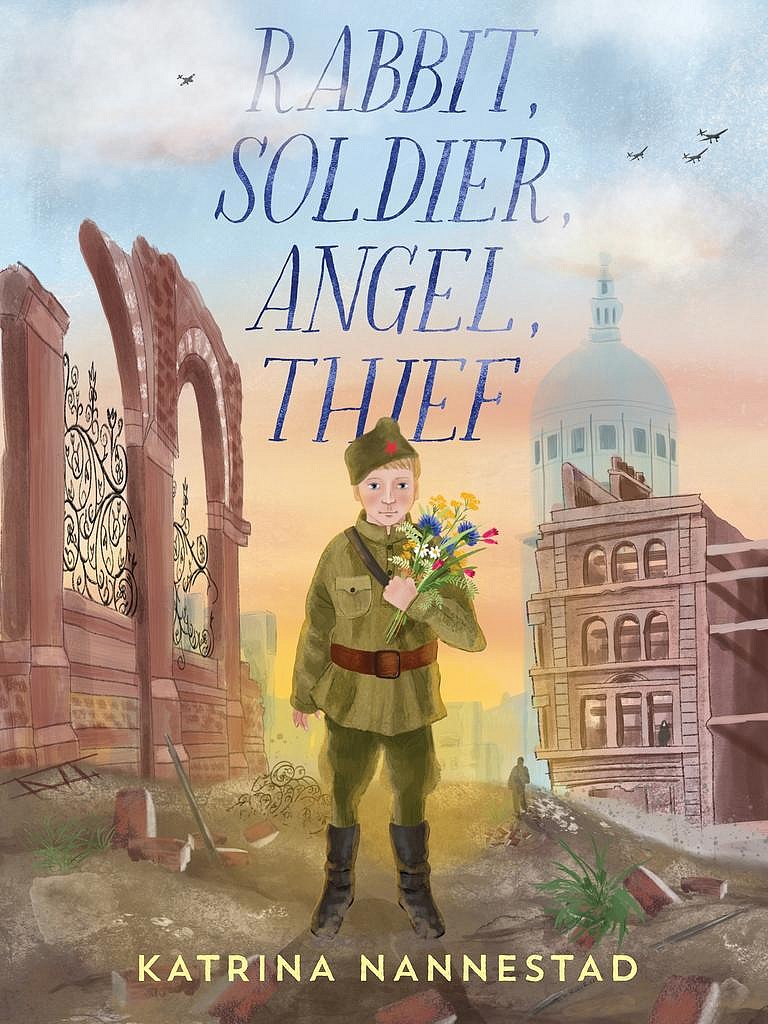
Rabbit, Soldier, Angel, Thief by Katrina Nannestad, award-winning author of ‘We Are Wolves’, is one of our family’s favourite read aloud books of 2021. ‘Rabbit, Soldier, Angel, Thief’ has been responsible for many later than usual bed times as we were utterly captivated by this story. This historical fiction book is inspired by real people and real events and much research has been used to make the story historically accurate by retelling what life was like in war torn Russia in 1942 through the eyes of Sasha, a Russian six-year-old boy soldier. In the Author’s Note at the back of the book it sheds light on Katrina’s deep sense of responsibility to honour the people that lived through these catastrophic events. Katrina’s aim is to accurately portray Russian culture, places, battles as well as the daily life of the Red Army soldiers and the devastatingly tragic losses, immeasurable suffering, devastation and injustice the Soviet people endured during the Second World War. Even though this story explores the unimaginable horrors of war and the human face of war, it does this in such an accessible and sensitive way for children. It is also a story of hope and highlights the power of courage, love and friendship. It shows the complexities of war, the futility and that everyone loses in a war.
At the beginning of this story the reader is introduced to Sasha who is in hospital after sustaining multiple injuries. He is mute because of the trauma he has experienced. When all the soldiers are sleeping, under the veil of darkness, Sasha manages to get out of bed and steal certain objects which he hides in his mattress. All of these stolen items trigger memories from his past and give him the ability to eventually tell his story to the medical staff and soldiers in the hospital.
There is so much to appreciate and love about this book. Katrina Nannestad masterfully contrasts the blissful times of peace with the ugliness of war. Telling the story through flashbacks heightens the suspense. This engaging literary device relies on using seemingly unrelated objects to trigger memories from the war and reveal snippets of Sasha’s story from the past.
A detailed review for Rabbit, Soldier, Angel, Thief can be found on the Reading Opens Doors blog here
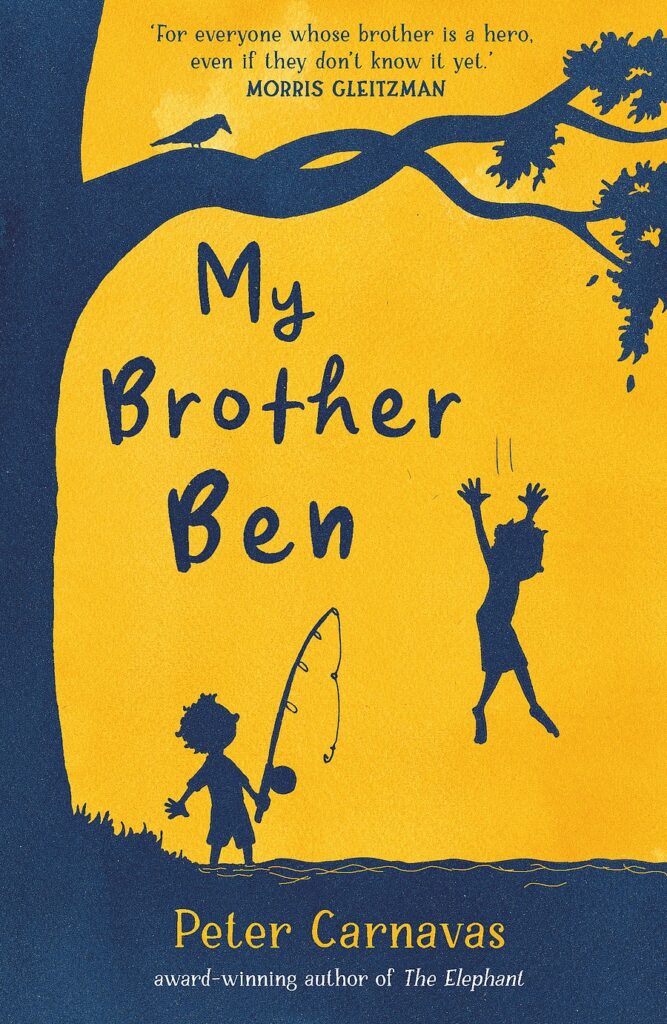
My Brother Ben by Peter Carnavas is a glorious book to dive into, it will pull at your heartstrings, make you cheer out loud and it will warm your heart. It is a story about hope, trust, acceptance as well as brothers and birds. A story where the reader feels the highs, lows, frustrations, challenges and love that come with the unbreakable bond between two brothers. Ben is the older brother, he is brave, bold, adventurous, carefree and very much looked up to and adored by his younger brother, Luke. Luke is cautious, timid, lacks confidence and has an impressive talent for drawing birds and identifying them by listening to their songs.
Ben and Luke are at a time of change in their lives as their Dad has suddenly left their family home and Ben is about to start high school. With this comes a new friendship for Ben in the form of Frankie, a new girl to the area. These unchartered waters impact their relationship. Their Mum and her younger sister, Gem, help them navigate the waves of change. Aunty Gem is particularly close to Luke as they share a passion for birdwatching. Luke finds great comfort in birdwatching; it is an escape for him, a time where he can be present in the moment and not let his mind wander to ruminate about the what if questions.
Ben and Luke live on the banks of Cabbage Tree Creek in Queensland. Peter Carnavas brings the creek to life with his evocative descriptions and the way he personifies the creek which adds to the rich descriptions. It is here, on Cabbage Tree Creek, where the boys are free to explore, play, enjoy adventures and dream during their summer school holidays. They share a dream about owning a boat so that they can explore the creek further and fish in ‘The Pocket’, set up camp, experience adventures and sleep under the twinkling stars.
A detailed review for My Brother Ben can be found on the Reading Opens Doors blog here
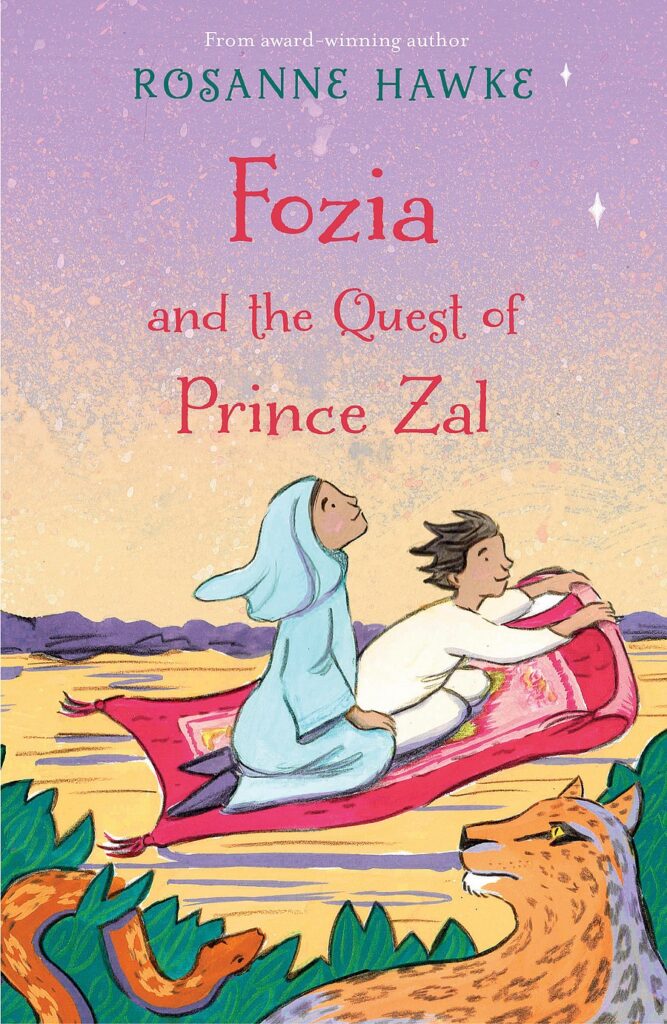
Fozia and the Quest of Prince Zal is a compelling story of heartbreak and tenacity, inspired by the Pakistani flood of 2010 which affected twenty-one million people, eight million of these being children. This story is set six months after this unprecedented disaster, when the water levels, which took months to recede, were almost back to normal. This book is a window into the aftermath of this catastrophic disaster and shares touching tales from believable characters about community, compassion and a sense of belonging. This will no doubt elicit in readers a sense of empathy and compassion for Fozia as well as all victims of this flood.
Fozia, a twelve-year-old girl survives the flood, lived in a tent camp and now attends a tent school. Her house was consumed by the flood and since this disaster she has not seen any of her family. She is in the care of Aunty Meena, Uncle Akram and their sons, Jehan and Amir who make her feel welcome and supported. They provide her with the opportunity to continue her schooling, a prospect that seemed bleak prior to the flood as she was about to join her mother and father working at the brick kiln to help her family repay the debt they owe the owner.
Each day sees Fozia filled with unwavering hope that she will hear news that a new family arrived at the tent camp and it will be hers. Fozia finds peace and comfort in telling stories to Jehan and Amir, stories inspired by her own family. These stories help Fozia cope with her heartache and make her family feel closer. Storytelling empowers Fozia to communicate and connect with the brothers, as well as express her hopes, fears and what is in her heart. The stories also serve to help ease the burden of a family secret that Fozia is keeping and fiercely protecting. Fozia crafts a captivating story which the boys listen to wide eyed. She seamlessly weaves her precious family memories into a fairy tale about a young boy, Prince Zal, who becomes ill with leprosy. There is a social stigma attached to this disease and Prince Zal is isolated as there is a fear his disease could spread to his siblings and others. Fozia is quick to educate the brothers and points out that leprosy is difficult to catch, can be treated and cured. In Fozia’s story, Prince Zal is on a quest to save his beloved little sister. His sister is swept away down a river and into a dangerous jungle. Prince Zal leaves the palace and makes his way to the hazardous jungle to find his sister. In Fozia’s fairy tale, Prince Zal meets a wise woman who gifts him a flying Persian carpet for as long as he requires it to fulfil his quest. So begins Prince Zal’s quest to reunite with his sister. His quest has all the ingredients for an enthralling adventure as Prince Zal embarks on a dangerous mission, defying the odds in an attempt to rescue his younger sister. Prince Zal must be clever, resourceful and creative to outsmart a formidable and menacing anthropomorphic character to be successful in his quest.
A detailed review for Fozia and the Quest of Prince Zal can be found on the Reading Opens Doors blog here
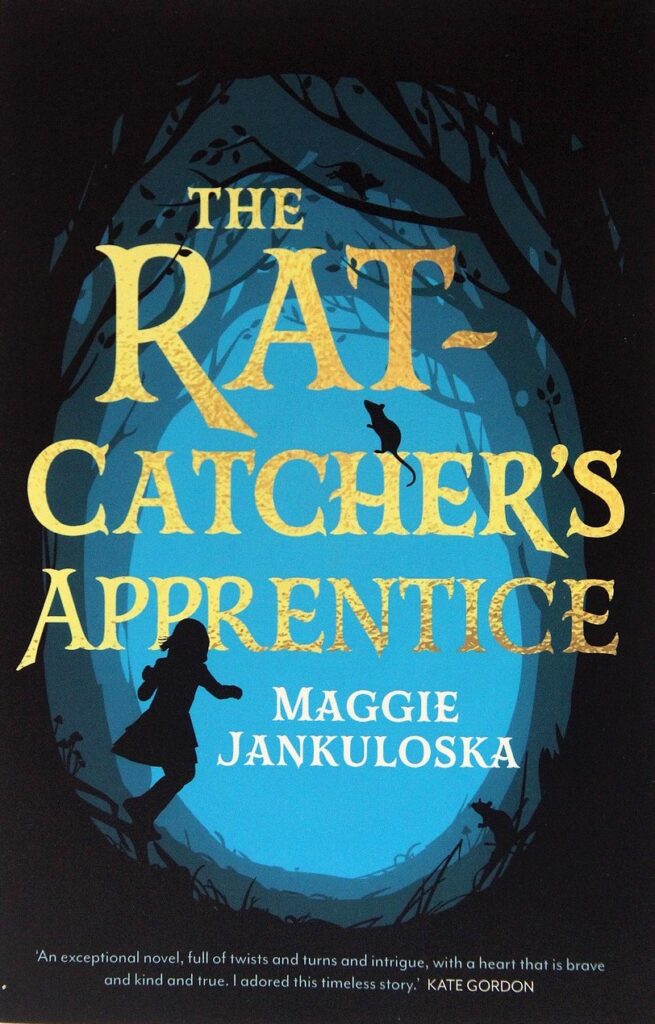
The Rat-Catcher’s Apprentice, a historical novel for upper primary and lower secondary school students by debut author Maggie Jankuloska is a gripping novel that transports the reader to France, 1665 and into the Perrin family. Marie Perrin is twelve years old and has spent years being trained by her stern mother to become the maid for the soon to be countess, Josette. This role is not of Marie’s choosing and doesn’t at all align with her dreams or hopes for a life of adventure.
One fateful night an accident sees Marie’s employment prospects to work as a maid shattered. This also has catastrophic ramifications for her parents who work for the count and both are dismissed, leaving her family with no way to earn an income and living in poverty. As punishment, Marie is sent away from her family to work as an apprentice for Gustave, a rat-catcher.
Marie leaves her family home – her Mama, Papa and her much adored twin brother – heartbroken, filled with dread and consumed by fear. She travels to the outskirts of the city to live with Gustave and his wife Marion to learn the art of rat-catching. Marie is thrust into her apprenticeship and the transformation of her life begins on the very first morning of rat-catching as she is given boy clothes to wear and her long braid is cut off……
This arresting story full of twists and turns explores themes of class divisions, belonging, non-traditional families and resilience. It shines a light on the fact that everybody has a story and understanding one’s story develops empathy for their situation, removing what was once indelible biased views and judgement. Maggie Jankuloska’s evocative writing allows the reader to visualise the characters and connect deeply with their experiences. It is impossible not to become invested in the storyline because Maggie draws the reader in close to the authentic, layered characters, their emotions, the action and the intrigue. Despite the dark and at times harrowing periods, this is ultimately a story full of heart, hope, love, courage and kindness.
A detailed review for The Rat-Catcher’s Apprentice can be found on the Reading Opens Doors blog here.
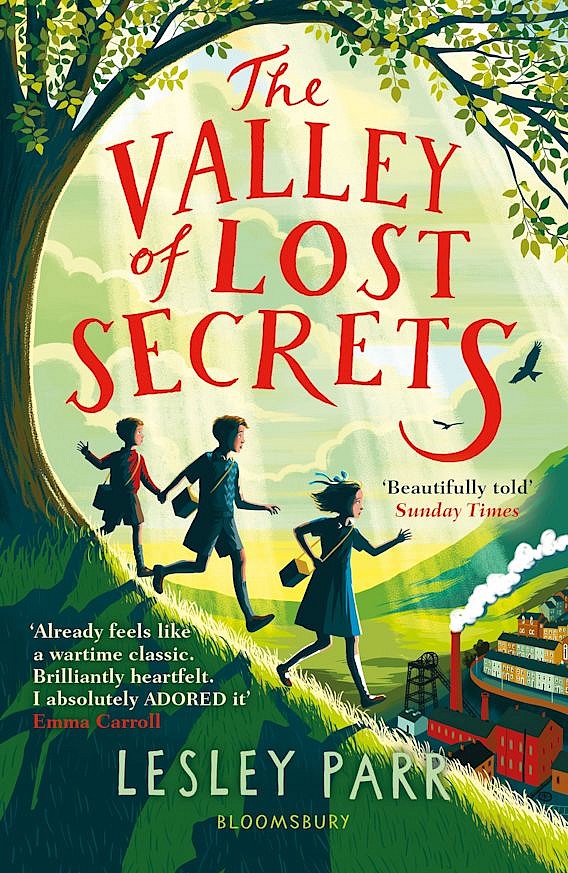
The Valley of Lost Secrets is a tender story is set in a small coal mine village in South Wales, during the beginning of World War II in 1939. Children are evacuated from Islington, London and sent to live with families in Wales which is a stark contrast to life in London. Twelve-year-old Jimmy desperately misses his Dad and Nan back home and struggles to adapt to his new ‘home’ and surroundings. He grapples with all that has changed. Nothing is as it was in London including the climate, the environment, the language especially some of the welsh dialect, the small knit community and his expectations of what he was expecting to see in Wales did not reconcile with the reality, which proved to be an industrial village. All these factors are so foreign to Jimmy, further exacerbating his feeling of being an outsider. Another significant and difficult challenge for Jimmy is the fellow evacuees and how moving to London has brought out changes in them he could have never anticipated, especially with his best friend Duff as well as Florence Campbell who was not well liked in London. Coupled with the enormous changes, Jimmy also feels the responsibility to look after and protect his likeable six-year-old brother Ronnie who seems to be adapting to his new environment and family they have been billeted with quite well.
While exploring his new neighbourhood, Jimmy discovers a human skull in the hollow of a tree and this sets his mind racing in this foreign place where he feels so alone. Who does the skull belong to? Is there a murderer living in his new home? Is he really safer here than he would be in London? This mystery also has Jimmy questioning who he can trust with this information. He does not want to burden his younger brother and his best and oldest friend Duff has proven they are no longer friends.
A new place means new beginnings in more ways than Jimmy could have ever bargained for. He finds not only a fiercely loyal ally, but also a resourceful, trustworthy friend in a person he would have never expected. Together they set about to solve this mystery of the skull and in doing so make life changing discoveries that affect them and the village in Wales…
There is so much to appreciate about this book. The characters are authentic, rich and layered; the story is fast paced and engaging; there is an intriguing mystery to be solved (in fact, there are actually two mysteries to solve and the astute reader will identify this part way through the book) and the setting is so well described the reader can visualise themselves there.
A detailed review for The Valley of Lost Secrets can be found on the Reading Opens Doors blog here
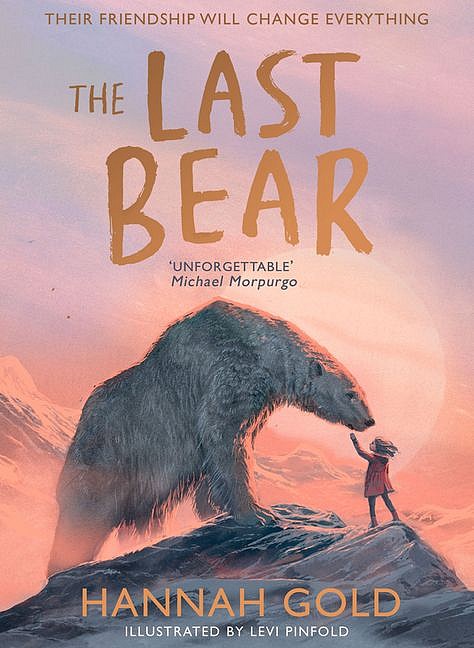
The Last Bear by Hannah Gold and illustrated by Levi Penfold is a deeply moving, hopeful and inspiring story about eleven year old April, who travels with her father, a scientist, to a remote Arctic Island, Bear Island, to live for six months during the northern summer. His job is to conduct meteorological research and record the data to detect changes for the Norwegian government. April and her father are the only people on the island. April’s Dad tells her that despite the name of the island, there are no polar bears there because the melting ice caps mean polar bears can no longer access Bear Island from the closest mainland area near Svalbard, it is simply too far for them to swim. However, one summer night, April sees the most incredible sight she has ever seen, a majestic polar bear.
Since April’s Mum passed away, her Dad is withdrawn and distant. He buries himself in work. This intensifies on Bear Island, leaving April with long, endless days to explore this seemingly vast land of emptiness, so quiet and untouched. On her travels, April discovers a beautiful polar bear that from a distance appears powerful. It’s only when April looks at the bear through binoculars that she discovers the bear appears very thin and is moving gingerly. So begins April and Bear’s journey together as April gains Bear’s trust, nurses Bear back to health and formulates a plan to rescue him. Together they experience a summer chock full of adventure. They discover a way to communicate and understand each other. For each of them, it is a summer of discovery and finding their voices….
This empowering story highlights the effects of climate change and the idea that one person, no matter how old they are, can make a difference. This story explores relationships and bonds in all their forms – deeply connected, strained, tragically altered, finding a “new normal” amongst loss and grief, the unbreakable bond between an animal and child as well as the relationship that people’s actions have on the environment and the habitat for many animals.
A detailed review for The Last Bear can be found on the Reading Opens Doors blog here.

The Faraway Truth by Janae Marks is a timely, captivating mystery full of suspense as Zoe Washington searches for the truth and justice in the face of adversity. On Zoe’s twelfth birthday she receives a letter with the return address being Massachusetts State Penitentiary. This letter is from her imprisoned biological father, Marcus, who she has never met and only knows from what her mother has said about him. Zoe has been told that Marcus is a liar, manipulator and a monster; however, Zoe is surprised to find that his letter suggests otherwise. The letter from Marcus has Zoe questioning everything she thought she knew about her biological father. She writes back as she wants to learn more about him. In one letter Marcus says he did not commit the crime and he has an alibi. Zoe is determined to find out the truth and through sheer determination she goes on a courageous quest to seek the truth. Zoe has a wise confidante in her Grandma and support from her good friend and neighbour Trevor. They help Zoe find out whether or not Marcus is lying or telling the truth. Zoe is an endearing character with a passion for baking, an indomitable spirit and a strong moral compass. Janae Marks sensitively explores themes of family bonds, friendship, standing up for what you believe in, systemic racism, inequality, and racism in the court and prison systems. Despite the heavy themes, this story is hopeful and will no doubt pull at your heartstrings.
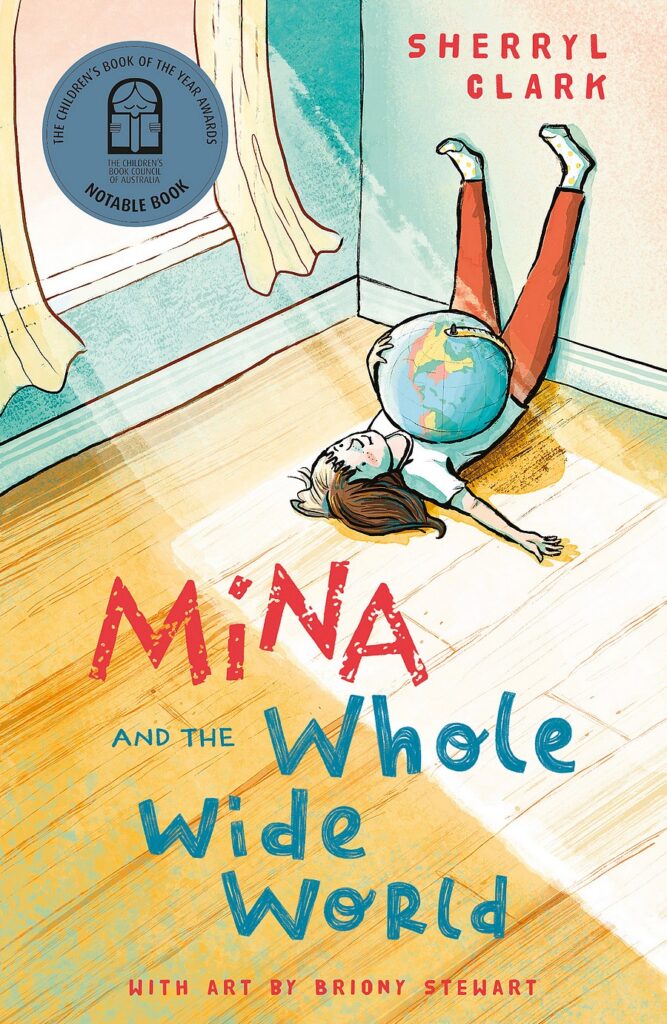
Mina and The Whole Wide World by Sherryl Clark is a powerful verse novel that draws you into Mina’s world right from the very start. Mina shares a room with her little brother, Georgie, “he’s a wrecker”, so Mina is desperately looking forward to moving into her very own room where she can unpack her box of precious things and then she will no longer need to hide this box of treasure from Georgie. Mina’s room is almost ready; one more coat of paint and then it is all hers. When her dream of owning her own room is nearly realised, Mina’s parents tell her that someone is coming to live with them for a little while and they will need Mina’s room. Mina is shattered and is devoid of words as the reality of this sinks in. Mina feels voiceless as she feels robbed of what was hers and the devastation as well as an enormous sense of loss causes her to withdraw and not speak. This person who is coming to stay is Azzami, he is a refugee. His mother is in hospital and his father has passed away.
Mina is blinded by her own disappointment and has little tolerance for Azzami who does not speak to her family, seems to prefer his own company and worst of all, spends the majority of his time in what was meant to be her room. Mina shows little compassion for Azzami who is in her class at school.
Mina and Azzami have a very caring, wise and sensitive teacher, Ms Smart, who introduces Azzami and tells the class a little about him. Ms Smart encourages Azzami to speak to the class, but respects his decision to decline. Oliver is quick to cast judgements about Azzami and starts calling him names. Ms Smart swiftly responds showing no tolerance for Oliver’s behaviour. However, during recess Oliver continues to taunt Azzami who does not react. Oliver then turns on Mina. Mina is frustrated that Azzami won’t speak, or stand up for himself. She doesn’t understand why.
It is through Azzami’s incredibly detailed drawings that Mina learns about Azzami and develops a sense of empathy. Her steely heart towards him softens as she is awakened to his life and what it has entailed living in and fleeing from Afghanistan. This understanding marks the beginning of a friendship. Azzami’s drawings enable Mina to see his world through his eyes and this very powerful realisation leads Mina to the discovery that we can share a space and our hearts with someone new to us, or from another place. There is space for sharing and everyone ‘in the whole wide world’.
A detailed review for Mina and the Whole Wide World can be found on the Reading Opens Doors blog here.
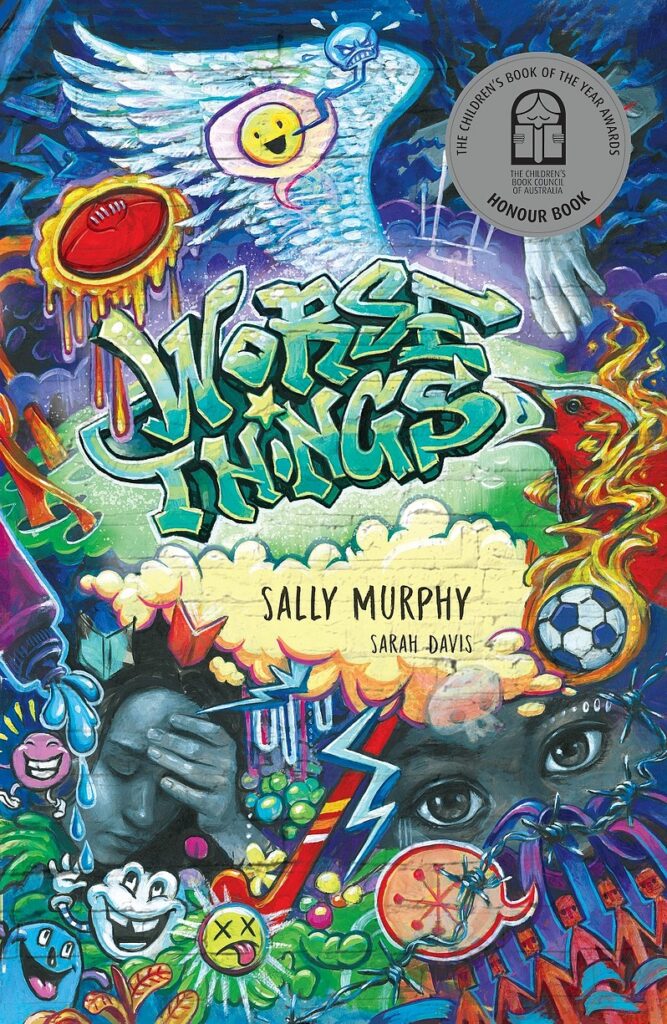
Worse Things by Sally Murphy with illustrations by Sarah Davis is a touching story about connections and belonging. This is written in free verse and tells the story of three characters, Blake, Jolene and Amed who all enjoy different sports and attend the same high school in a fictional town called Cowan. Blake played Aussie Rules competitively until he fractured his arm. This injury forces him to sit out for the rest of the season and be ‘part’ of his team from the sidelines. While watching the games from the sidelines Blake finds himself being shunned by many of the players from his team and struggles with this new position on the sidelines. Jolene is an excellent hockey player who doesn’t share the same passion for hockey as her controlling mum does and Amed, who speaks little English after living in a refugee camp wants to belong, but finds it difficult to communicate and this language barrier causes him to feel isolated. The common experience the three characters share is that they are all on a journey to work out where they belong and how they fit in.
The powerful graffiti art style of illustrations by Sarah Davis adds a rich new dimension to the story as they include clues, in the form of symbols and motifs, about the thoughts, emotions and experiences of each of the characters. The illustrations alone sparked many discussions in our family. The big themes also had us talking. The themes include connections, exclusion, alienation, resilience, friendship, grief, refugee experiences and family. These themes are sensitively explored in a way that is digestible for middle to upper aged primary school children.
A detailed review for Worse Things can be found on the Reading Opens Doors blog here

The Little Wave by Pip Harry is a verse novel I read aloud to my children and a story that stayed with us long after we turned the last page. One aspect that we particularly enjoyed about this book is that it is told from the perspective of three characters, Jack, a keen cricket player, who lives in Mullin, a fictional country town in New South Wales, Australia; Noah a surfer and Lottie, who is fascinated by insects. Noah and Lottie are from the Northern beaches in Sydney. Jack has never seen the ocean and is very keen to be able to go on his school’s trip to the beach in Manley. There is a lot of work to be done (personally as well by his class to fundraise enough money to make this a possibility). Each of these characters have their own set of challenges that they are dealing with and trying to navigate, some of which relate to friendship, bullying, family, loss, mental health and adversity.
Despite many of these challenges being difficult and complex issues such as loss, grief (as well as the way they can manifest) and bullying, the story is not heavy and readers may be able to connect with some of these challenges. These issues are explored with such tenderness and in a way that is accessible to younger readers. ‘The Little Wave’ is such a perfect title for this book; it serves as a metaphor for the themes in this book about seizing opportunities (catching the little waves when they present), facing your fears and having the courage to overcome challenges as well as not giving up in the face of adversity (getting dumped by a wave nine times and standing on the tenth).

Thanks Elise for these curated lists. Can I please share your read aloud lists with my staff?
Do you mind if I link on a Learn Path guide – with attribution of course!!
Such good choices of books.
Hi Peta, it is my pleasure to share these curated lists. Of course, please go ahead and distribute anything I share with your staff and feel free to link it on a Learn Path guide. Thank you for asking about this. I will be doing another collection of outstanding books for upper primary students in the coming week, so stay tuned for that!